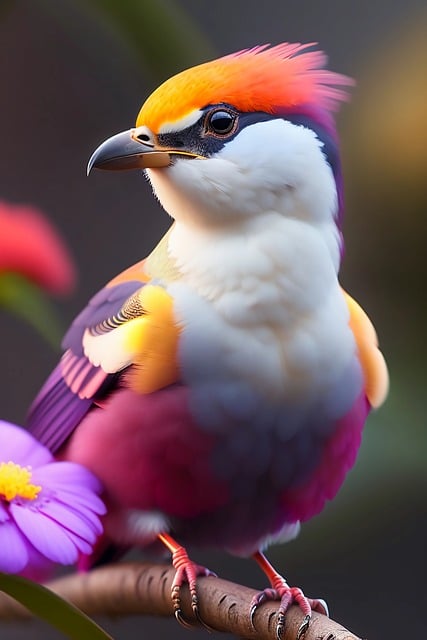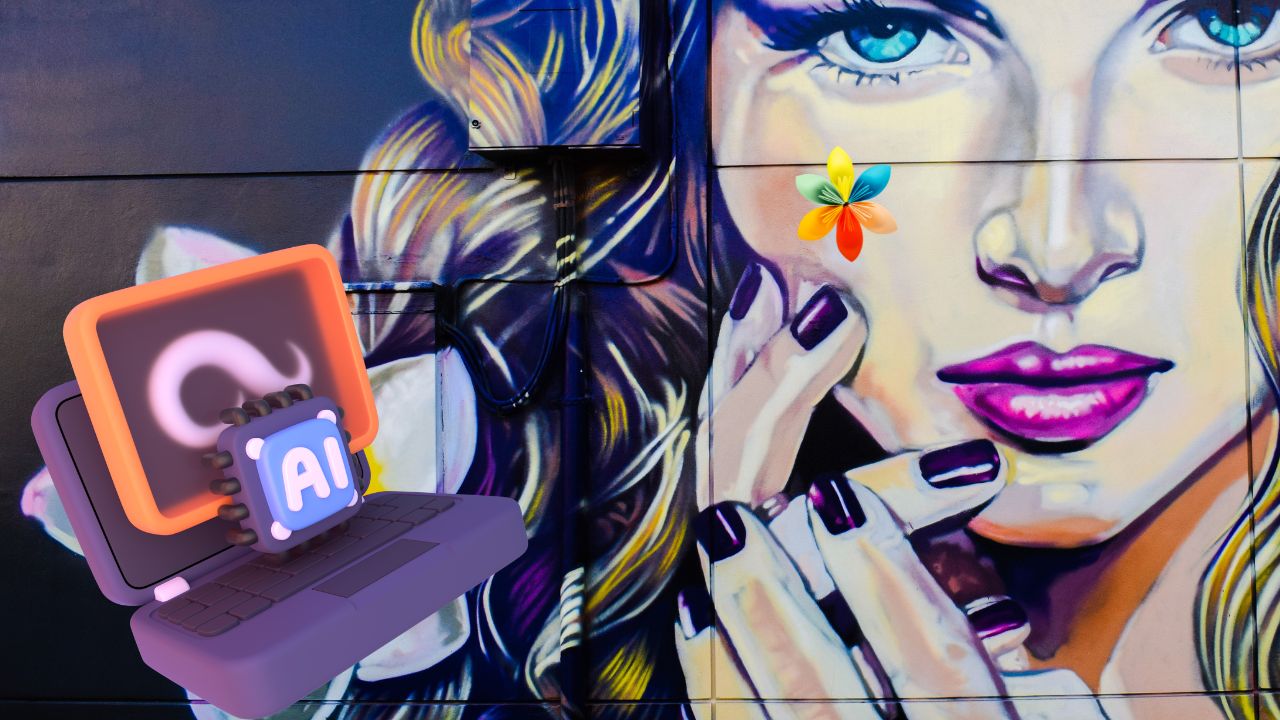Artificial intelligence (AI) art is a fascinating and innovative field that combines the power of machines with human creativity to produce unique and thought-provoking artworks. In simple terms, it refers to art created or influenced by AI algorithms. Imagine a computer program that can analyze thousands of paintings, poems, or sculptures and then use that knowledge to generate its own original artwork. That’s the essence of AI art.
Artificial intelligence (AI) has revolutionized various industries, and the art world is no exception. AI art, also known as generative art or computational creativity, refers to artworks created or influenced by AI algorithms. This emerging field combines the creative capabilities of machines with human input to produce unique and thought-provoking artistic pieces.
1. The Evolution of AI Art
AI art has a rich history that dates back to the 1960s when artists and computer scientists first started experimenting with algorithms to generate artistic outputs. However, due to technological limitations at the time, the true potential of AI art was not fully realized. It was only in recent years, with advancements in machine learning and deep neural networks, that AI art began to flourish.
2. How Does AI Create Art?
AI creates art by learning from existing artistic works and data. It does this through a process called training, where a neural network analyzes vast amounts of artistic input. Once trained, the AI algorithm can generate new artworks based on the patterns and characteristics it has learned. This iterative process allows AI to create pieces that reflect both its training data and its own creative interpretation.

3. Styles and Techniques in AI Art
AI art comes in various styles and techniques. Some AI artists aim to replicate famous art styles like Impressionism or Cubism, while others strive to create entirely new and abstract forms of expression. One popular technique is neural style transfer, where the AI algorithm combines the content of one image with the style of another, producing mesmerizing and unique visuals.
4. The Impact of AI Art on the Art Community
AI art has sparked a significant impact on the art community. It has challenged traditional notions of creativity, authorship, and the role of the artist. AI algorithms can generate art at an unprecedented speed, leading to an influx of diverse and innovative artistic outputs. This has opened up new opportunities for artists to experiment with AI and explore unconventional artistic possibilities.
5. Ethical Considerations in AI Art
The rise of AI art has raised important ethical considerations. One key concern is the question of authorship. Who should be credited as the creator of an AI-generated artwork? Should it be the artist who trained the algorithm or the AI system itself? Additionally, AI algorithms learn from existing datasets, which may include biased or controversial content. This raises concerns about the perpetuation of societal biases or the potential misuse of AI-generated art.

6. AI Art in the Digital Age
The digital age has provided a fertile ground for AI art to thrive. Online platforms and social media have facilitated the sharing and dissemination of AI-generated artwork. Digital mediums allow for interactive and dynamic experiences, blurring the boundaries between the creator and the viewer. AI-generated art installations and virtual reality experiences offer immersive and transformative encounters for audiences.
7. AI Art and Traditional Art Forms
AI art has not replaced traditional art forms but has rather become a complementary tool for artists. Many artists use AI algorithms as a source of inspiration or as a tool to enhance their creative process. AI-generated art can also serve as a collaborative medium, allowing artists to work in tandem with AI systems to produce unique and captivating artworks.

8. AI Art and Creativity
The role of AI in the creative process has sparked debates about the nature of creativity itself. Some argue that AI can never truly be creative as it lacks consciousness and subjective experiences. Others view AI as a catalyst for human creativity, providing new perspectives and expanding the boundaries of artistic expression. The relationship between AI and creativity remains a topic of ongoing exploration and discussion.
9. The Future of AI Art
The future of AI art holds immense possibilities. As AI algorithms continue to advance, we can expect more sophisticated and nuanced artworks. AI art may become integrated into our daily lives, with AI-generated pieces adorning our homes, public spaces, and digital platforms. The collaboration between humans and machines in the art-making process may become increasingly seamless, blurring the line between AI-generated and human-created art.
10. Pros of AI Art
- Innovation and Exploration: AI art allows for new and exciting ways of artistic expression, pushing the boundaries of traditional art forms.
- Speed and Efficiency: AI algorithms can generate art rapidly, saving time for artists and encouraging experimentation.
- Collaboration: AI can be used as a collaborative tool, enabling artists to work alongside machines to create unique and captivating artworks.
- Accessibility: AI-generated art can reach a wider audience through digital platforms, making art more accessible to people worldwide.
11. Cons of AI Art
- Ethical Concerns: AI art raises questions about authorship and the use of biased or controversial training data.
- Authenticity Debate: Some argue that AI art lacks true creativity as it lacks consciousness and subjective experiences.
- Legal Implications: The legal framework surrounding AI art, including intellectual property rights, is still evolving.
- Loss of Human Touch: AI-generated art may lack the emotional depth and human touch found in traditional art.
12. The Future of AI Art
The future of AI art holds immense possibilities. As AI algorithms continue to advance, we can expect even more sophisticated and nuanced artworks. AI-generated pieces may become integrated into our daily lives, adorning our homes, public spaces, and digital platforms. The collaboration between humans and machines in the art-making process may become seamless, opening up exciting new frontiers for artistic expression.
In conclusion, AI art is an exciting blend of technology and creativity that challenges traditional notions of art. It
13. Conclusion
AI art represents a thrilling intersection between technology and creativity. It challenges traditional notions of art, pushes the boundaries of human imagination, and offers new perspectives on artistic expression. As AI art continues to evolve, it is crucial to address the ethical considerations surrounding its creation and impact. By embracing AI art and exploring its potential, we embark on an exciting journey that redefines the future of artistic endeavors.
- The Rise of AI Engineers: Unveiling Software 3.0 in Generative AI
- Transforming Data Centers: The Top 10 Ways AI and ML Are Revolutionizing the Data Centers
- The Rise of Generative AI in Gaming: Revolutionizing Game Development
- AI: The Key to Efficiency and Productivity in the Digital Age-2024
- Samsung Integrates care.ai’s Smart Care Facility Platform for AI-Powered Patient Monitoring
- 6 Best AI Chart Generators: Creating Stunning Chart and Graphs Made Easy
- 3 Best AI Pets with Emotional capabilities
- Mercedez-Benz Gets a ChatGPT In-Car Voice Control Upgrade
- Designs.ai: Best Invitation Design AI-Where Imagination Meets Elegance
14.FAQ-What Is AI Art
Can AI art be considered authentic art?
Yes, AI art can be considered authentic art. While the creative process involves AI algorithms, human artists play a crucial role in training, curating, and refining the outputs.
Is AI art a threat to traditional artists?
AI art is not a threat to traditional artists. Instead, it offers new tools and avenues for artistic exploration and collaboration.
Can AI-generated art evoke emotions like human-created art?
AI-generated art has the potential to evoke emotions just like human-created art. The emotional impact of art is subjective and can be experienced regardless of the creator’s origin.
Are there any legal implications associated with AI art?
The legal implications of AI art are still evolving. Intellectual property rights and authorship attribution are areas that require careful consideration and legal frameworks.
How can AI art contribute to cultural diversity?
AI art can contribute to cultural diversity by offering new perspectives and enabling artists from different backgrounds to explore and share their unique artistic visions.
